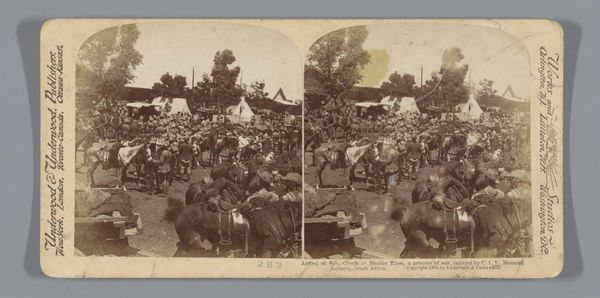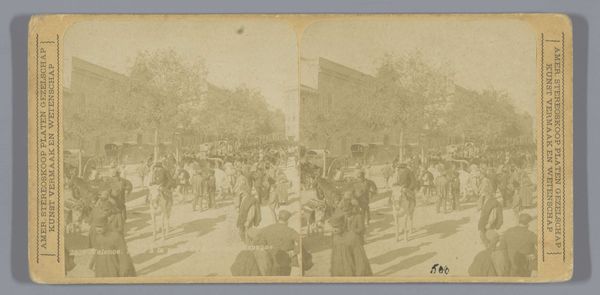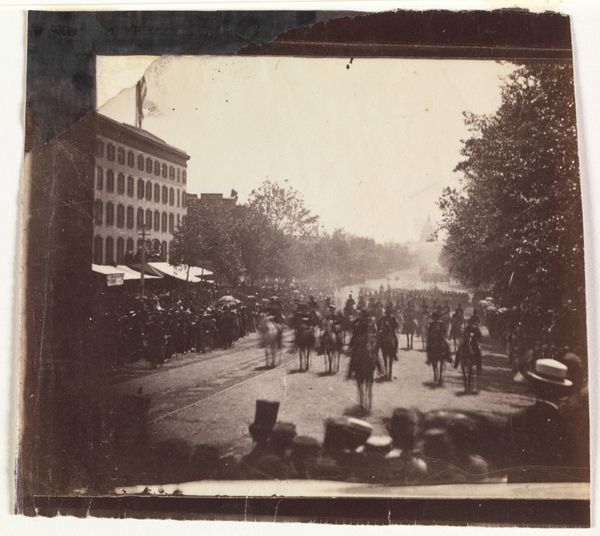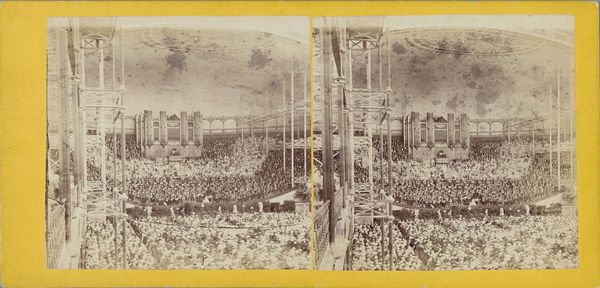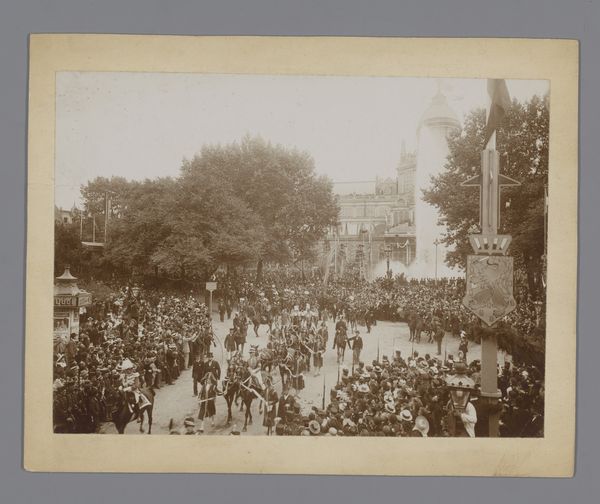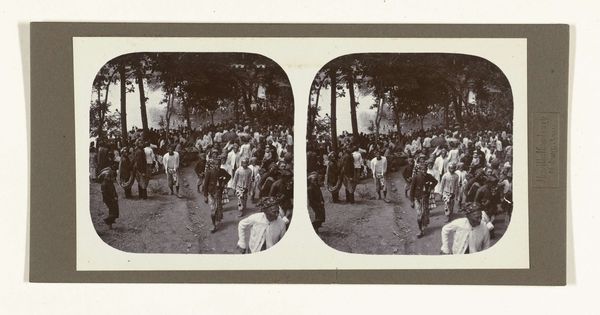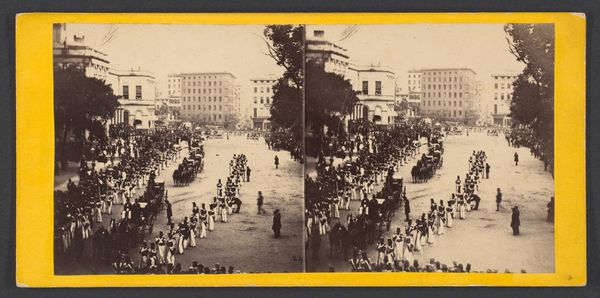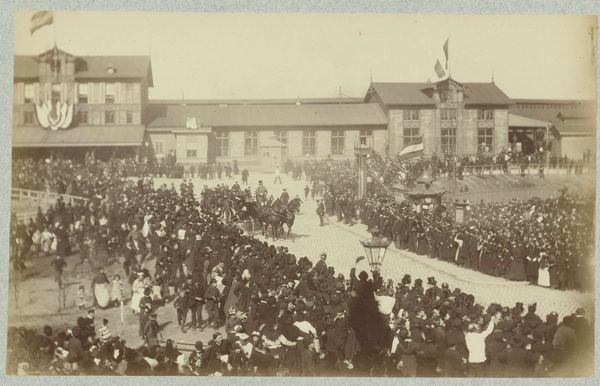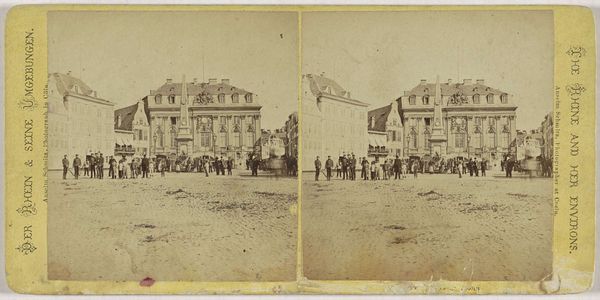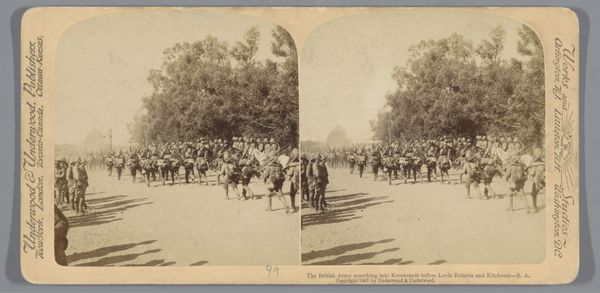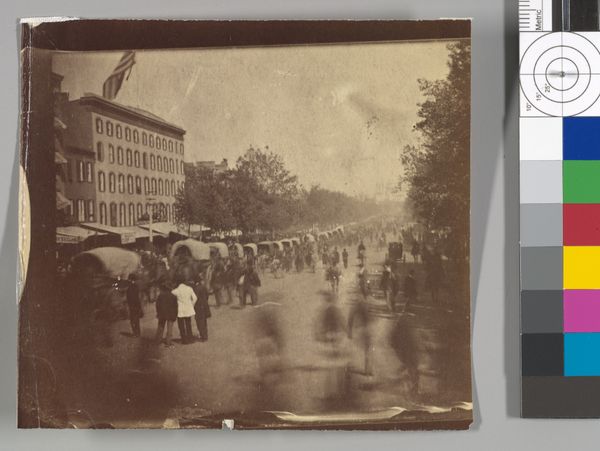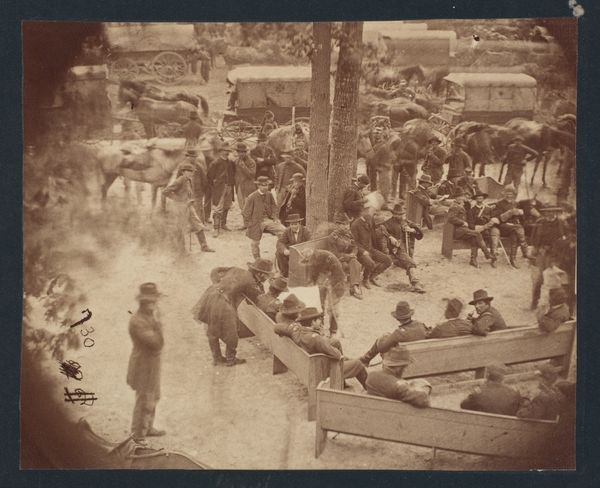
Dimensions: height 85 mm, width 170 mm
Copyright: Rijks Museum: Open Domain
Editor: This gelatin-silver print, “Promenade te Alicante,” is dated around 1850-1880. It looks like a lively street scene, bustling with people. The detail achieved with photography is incredible, even in this era. What can you tell me about this photograph? Curator: The choice of gelatin silver reveals much. We should examine what the popularization of photography meant for documenting labor and class. Here we see an alleged "promenade," a leisure activity for the bourgeoisie, but what of the laboring classes captured in the frame? Editor: That's interesting. It does look staged with some blurred movement; perhaps some laborers and middle class exist together here. The focus on gelatin-silver process, though, feels quite technical. How does that relate? Curator: Think about it this way: gelatin silver printing, as a readily reproducible process, democratized image production but it also became a tool for social observation, a method to catalog types, classes, and labor. Who controls the means of representation, and whose story is truly being told? Editor: I see your point. The material process embedded here actually encodes access and perhaps exploitation through visual representation! Thanks, that’s given me a lot to consider about photography as both art and documentation of social standing. Curator: Precisely! Understanding art means interrogating its creation and what that act reveals about societal structures.
Comments
No comments
Be the first to comment and join the conversation on the ultimate creative platform.
